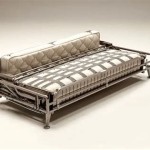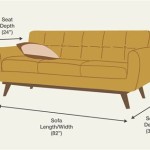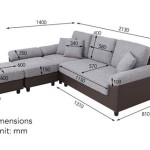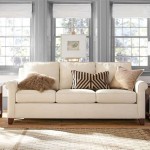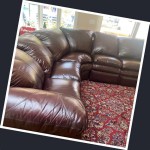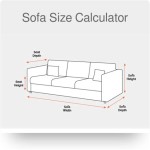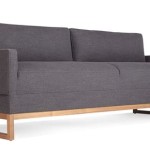What Sleeper Sofa Has The Best Mattress Topper?
When selecting a sleeper sofa, comfort is a paramount consideration. While the mechanism and frame contribute to the overall stability and longevity of the piece, the mattress dictates sleeping comfort. The mattress topper, in particular, plays a crucial role in enhancing the sleep experience, transforming a potentially uncomfortable sleeper sofa mattress into a more supportive and plush surface. Identifying the sleeper sofa with the "best" mattress topper involves a multifaceted evaluation, encompassing material quality, thickness, density, support, and overall user satisfaction. This article explores relevant factors to consider when assessing mattress toppers in sleeper sofas, aiming to provide a framework for informed decision-making.
The inherent challenge with sleeper sofa mattresses lies in their typically thinner profile compared to standard mattresses. This limitation stems from the need for the mattress to fold compactly within the sofa frame. As a result, sleeper sofa mattresses often lack the depth and inherent cushioning of traditional mattresses, potentially leading to pressure points and discomfort during sleep. A well-chosen mattress topper can effectively bridge this gap, adding a layer of padding and support that mitigates the shortcomings of the underlying mattress. It's essential to understand that the "best" mattress topper is subjective, dependent on individual needs and preferences, but certain characteristics consistently contribute to higher levels of satisfaction.
Key Considerations for Evaluating Sleeper Sofa Mattress Toppers
Several crucial factors should be considered when evaluating sleeper sofa mattress toppers. The material composition, thickness, density, and support level are all critical parameters that influence the overall comfort and suitability of the topper. These factors, in conjunction with user reviews and brand reputation, contribute to a comprehensive assessment of a mattress topper's potential performance.
1. Material Composition and its Influence on Comfort
The material composition of a mattress topper significantly impacts its comfort, breathability, and durability. Common materials include memory foam, latex, and fiberfill, each offering distinct characteristics. Memory foam, known for its contouring properties, molds to the body's shape, providing pressure point relief and spinal alignment. High-density memory foam tends to offer greater support and longevity compared to lower-density options. However, memory foam can sometimes retain heat, potentially leading to a warmer sleep experience. Gel-infused memory foam is often employed to mitigate this issue by promoting better airflow and heat dissipation.
Latex, derived from rubber trees, offers a more responsive and buoyant feel compared to memory foam. Latex toppers are naturally hypoallergenic and resistant to dust mites and mold, making them a suitable choice for allergy sufferers. Latex also possesses excellent breathability, contributing to a cooler sleep environment. Two primary types of latex are commonly used: Dunlop and Talalay. Dunlop latex is denser and firmer, while Talalay latex is softer and more consistent in texture. The choice between Dunlop and Talalay latex depends on individual preferences for firmness and support.
Fiberfill toppers, often made from polyester or cotton, provide a softer and more plush feel compared to memory foam or latex. Fiberfill toppers are generally more affordable but may lack the long-term support and durability of foam-based options. Fiberfill toppers tend to compress over time, requiring more frequent replacement. While fiberfill toppers offer a degree of cushioning, they may not provide the same level of pressure relief as memory foam or latex, particularly for individuals with back pain or other musculoskeletal issues.
2. Thickness and Density: Optimizing Support and Comfort
The thickness and density of the mattress topper directly influence its support and comfort. A thicker topper generally provides more cushioning and support, effectively minimizing the impact of the underlying sleeper sofa mattress. However, excessive thickness can make the sleeper sofa difficult to fold and store. A balance must be struck between providing adequate cushioning and maintaining the functionality of the sleeper sofa.
Density, measured in pounds per cubic foot (lbs/cu ft), indicates the amount of material packed into a given volume. Higher-density toppers tend to be more durable and supportive, resisting compression and maintaining their shape over time. Lower-density toppers, on the other hand, may compress more readily, losing their supportive properties and requiring more frequent replacement. For memory foam toppers, a density of 3 lbs/cu ft or higher is generally recommended for optimal support and durability. For latex toppers, density is less critical, as latex inherently possesses greater resilience and support compared to memory foam.
The optimal thickness and density depend on individual preferences and the characteristics of the underlying sleeper sofa mattress. If the mattress is particularly thin or worn, a thicker and denser topper may be necessary to provide adequate support. Individuals who prefer a softer and more plush feel may opt for a thicker topper with a lower density, while those who require more firm support may prefer a thinner topper with a higher density.
3. Support and Spinal Alignment: Prioritizing Sleep Health
The primary function of a mattress topper is to enhance support and promote proper spinal alignment. A well-designed topper should conform to the body's natural curves, distributing weight evenly and minimizing pressure points. This, in turn, can reduce discomfort and promote a more restful sleep. The level of support required varies depending on individual body weight, sleep position, and any pre-existing musculoskeletal conditions.
Individuals who primarily sleep on their side often benefit from a topper that provides ample cushioning for the shoulders and hips, preventing pressure points and maintaining spinal alignment. Memory foam toppers are particularly well-suited for side sleepers due to their contouring properties. Back sleepers, on the other hand, may require a firmer topper that provides more support for the lower back, preventing excessive sinking and maintaining spinal alignment. Latex toppers can be a good choice for back sleepers due to their responsiveness and supportive qualities. Stomach sleepers typically require a firmer topper to prevent excessive arching of the back, which can lead to discomfort and pain. A thinner, higher-density topper is often recommended for stomach sleepers.
Individuals with back pain or other musculoskeletal conditions should carefully consider the level of support provided by the mattress topper. A topper that is too soft may not provide adequate support, while a topper that is too firm may exacerbate existing pain and discomfort. Consulting with a healthcare professional or sleep specialist can provide valuable guidance in selecting a topper that is appropriate for specific needs and conditions. Adjustable firmness options are also available, allowing users to customize the level of support to their individual preferences.
Beyond these core factors, it is important to consider other aspects of a sleeper sofa and its mattress topper. Breathability, for example, is a crucial factor for maintaining a comfortable sleep temperature. Toppers made from materials like latex and gel-infused memory foam tend to be more breathable than traditional memory foam. The topper's cover also plays a role in breathability and overall comfort. Materials like cotton and bamboo are known for their breathability and moisture-wicking properties. Consider whether the cover is removable and washable for easy cleaning and maintenance.
Durability is another significant consideration. A high-quality mattress topper should be able to withstand regular use and maintain its shape and support over time. Look for toppers made from durable materials and constructed with quality craftsmanship. Reading user reviews can provide valuable insights into the long-term performance of different mattress toppers. Price is also a relevant factor. While it is important to invest in a quality topper, there are many affordable options available that offer excellent comfort and support. Compare prices and features from different brands and retailers to find a topper that fits your budget.
Ultimately, determining the "best" mattress topper for a sleeper sofa requires careful consideration of individual needs and preferences. By evaluating the material composition, thickness, density, support, breathability, durability, and price, individuals can make an informed decision that enhances the comfort and sleep quality of their sleeper sofa.

What Is The Best Mattress Topper For A Sofa Bed

Best Sofa Bed Mattress Toppers Spaze Furniture

The Best Sleeper Sofas Of 2025 Reviews By Wirecutter

Top 7 Best Sleeper Sofa Mattresses In 2024 Detailed Reviews Buyer S Guide

The Best Sleeper Sofas Of 2025 Reviews By Wirecutter

Sofabed Queen Topper 160 Innovation Living

The Best Sleeper Sofa Mattress Has 3 000 5 Star Reviews

The Best Sleeper Sofas Of 2025 Reviews By Wirecutter

Sofa Bed Foam Mattress Topper 4 Inch With Memory Gel Hide A Couch Replacement Made By Global In Usa

Choosing An Orthopedic Thin Mattress On The Sofa Topper


